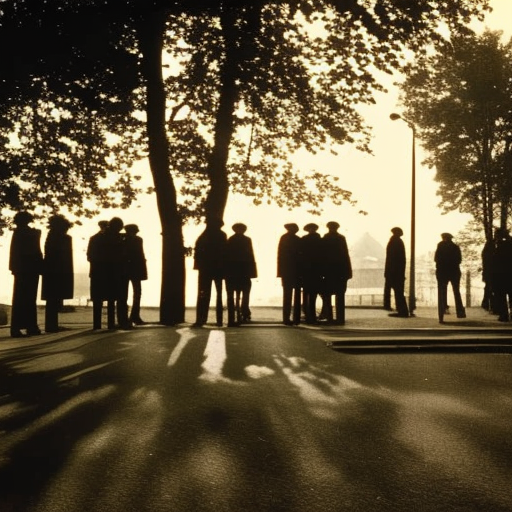Summary: Uprising of 1953 in East Germany
The Uprising of 1953 in East Germany, also known as the June 17 Uprising, was a major protest movement against the communist government of the German Democratic Republic (GDR). The uprising was sparked by a series of economic and political grievances, including increased work quotas, low wages, and the lack of political freedom. The protests began in East Berlin and quickly spread to other cities and towns across East Germany. The government responded with a brutal crackdown, resulting in the deaths of hundreds of protesters and the imprisonment of thousands.
Background
After World War II, Germany was divided into four occupation zones, with the Soviet Union controlling the eastern part of the country. In 1949, the Soviet zone became the GDR, a socialist state under the control of the Socialist Unity Party (SED). The SED implemented a centrally planned economy and suppressed political dissent, leading to widespread dissatisfaction among the population.
Causes of the Uprising
The Uprising of 1953 was primarily driven by economic grievances. The SED government had imposed increased work quotas on industrial workers without raising wages, resulting in a decline in living standards. Additionally, the government had introduced a new currency, the Deutsche Mark, which led to price increases and further economic hardship for the population.
Protests and Strikes
On June 16, 1953, construction workers in East Berlin went on strike to protest against the increased work quotas. The strike quickly spread to other sectors, with workers from factories, mines, and agricultural collectives joining the protests. The demonstrations soon turned into mass protests, with demands for higher wages, lower prices, and political reforms.
Government Response
The SED government initially tried to suppress the protests by using force. Soviet tanks were deployed to East Berlin, and the police and military were ordered to use violence to quell the uprising. However, the government’s response only fueled the anger of the protesters and led to further escalation.
Crackdown and Repression
The government’s crackdown on the uprising was brutal. Protesters were arrested, beaten, and in some cases, killed. The exact number of casualties is still disputed, but it is estimated that hundreds of people died during the uprising. Thousands of protesters were also imprisoned or sent to labor camps.
Aftermath and Legacy
Despite the government’s efforts to suppress the uprising, the events of June 17, 1953, had a lasting impact on East German society. The uprising exposed the deep dissatisfaction with the SED regime and its policies. It also highlighted the desire for political freedom and economic justice among the East German population.
The Uprising of 1953 was a significant turning point in the history of East Germany. It marked a moment of resistance against the communist government and served as a precursor to future protests and movements that ultimately led to the fall of the Berlin Wall in 1989 and the reunification of Germany in 1990.
In conclusion, the Uprising of 1953 in East Germany was a major protest movement against the communist government of the GDR. It was driven by economic grievances and a desire for political freedom. The government responded with a brutal crackdown, resulting in the deaths of hundreds of protesters and the imprisonment of thousands. The uprising had a lasting impact on East German society and played a significant role in the eventual reunification of Germany.












